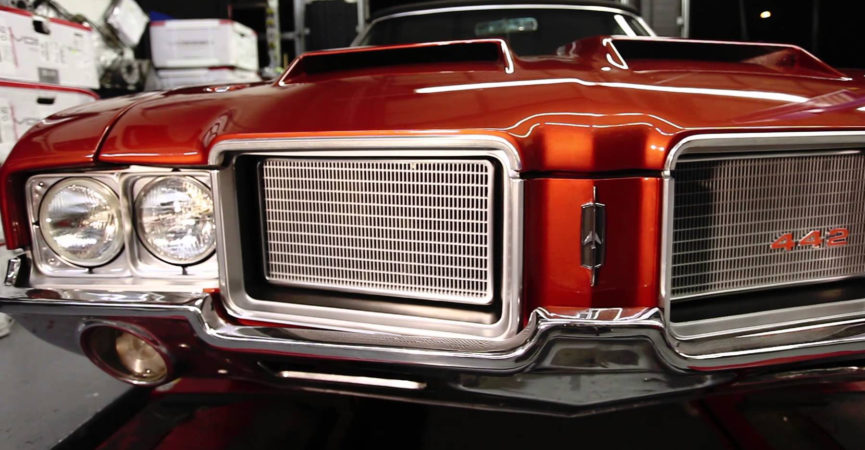
Best Cheap Classics to Buy and Enjoy Today
Fantasies are interesting things. On paper they seem like the ultimate height of desire, full of whimsy and prestige. As such, we as car guys and gals seem like we all spend a lot of time staring off into space as we mentally reach for the stars and think about how great that dream could be.
I’ve spent a more than reasonable amount of time over the last few years living a lot of peoples automotive wet dreams and if there’s anything I’ve learned from this seemingly fabulous existence, it’s that high end cars are nothing short of a COMPLETE pain in the ass. Don’t get me wrong. More times than not, the juice is worth the squeeze, but as a result I have garnered a rather extreme appreciation for cheap cars. They are dopey and fun and present much the same degree of excitement, personality and in many cases, offer a much more rewarding ownership experience than a lot of their more expensive counterparts, albeit from different angles. When we think about the classic smiles for miles adage, very few things do it as efficiently as an entry level classic.
But what is considered entry level? For the sake of this list I have selected what I believe to be the best options available in the $10,000’ish (or maybe a little more or a little less…. whatever) range. Certainly, examples of each of these worthy selections can be found for far more or far less depending on what you either can, or can’t live with or live without, but I consider this to be a good baseline for either entering, or enriching your footprint in the collector car sandbox, with minimal investment and good availability with not a tremendous degree of effort.
In no particular order……..
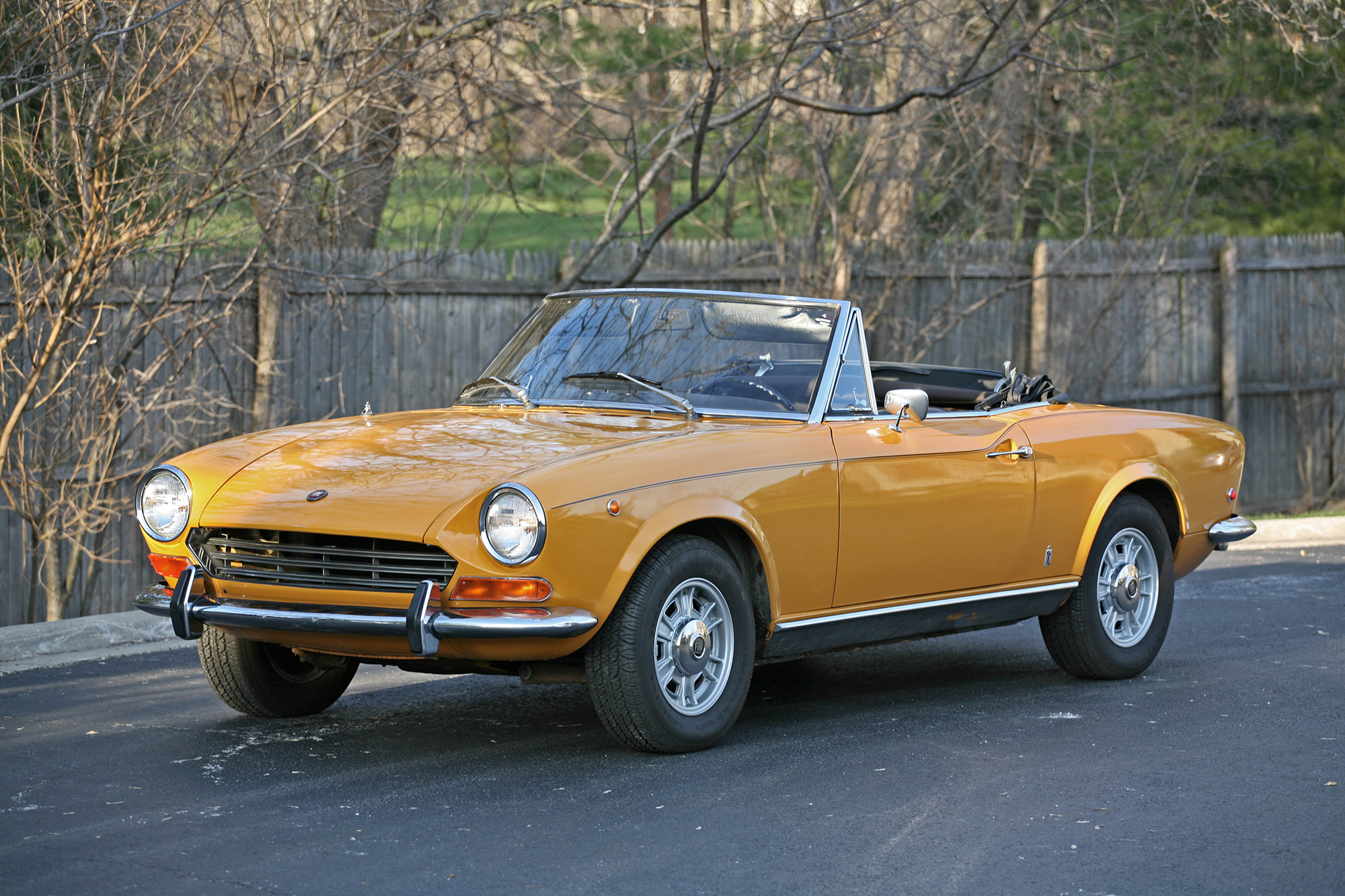 1968 – 1972 Fiat 124 Spider
1968 – 1972 Fiat 124 Spider
The Fiat 124 Sport Spider is delightful little sports car manufactured from 1966-1980. Designed and manufactured by legendary Italian designer carrozzeria Pininfarina, the monocoque, front-engine, rear drive Sport Spider debuted at the November 1966 Turin Auto Show. Fiat later marketed the car as the 2000 Spider (1979-1982), and then in 1983, Pininfarina took the reigns, marketing the car until the end of its production run in 1985 as the Pininfarina Spider Azzura.
Pros: Beautiful Pininfarina styling and real Italian charm that loosely mimics the Ferrari 275/330 GTS (at least from the back). Much roomier than its more common UK counterparts and a more comfortable driving position than a lot of similarly priced Alfas.
Cons: These were originally cheap cars that were sort of universally terrible from birth. Additionally, they were sold and serviced by dealers that didn’t really care to try and understand them, so there’s a lot of really bad cars out there. It pays to be picky and patient. Parts are not as readily available or as affordable as MG’s and Triumph in a similar stratosphere. Probably the most expensive car on this list.
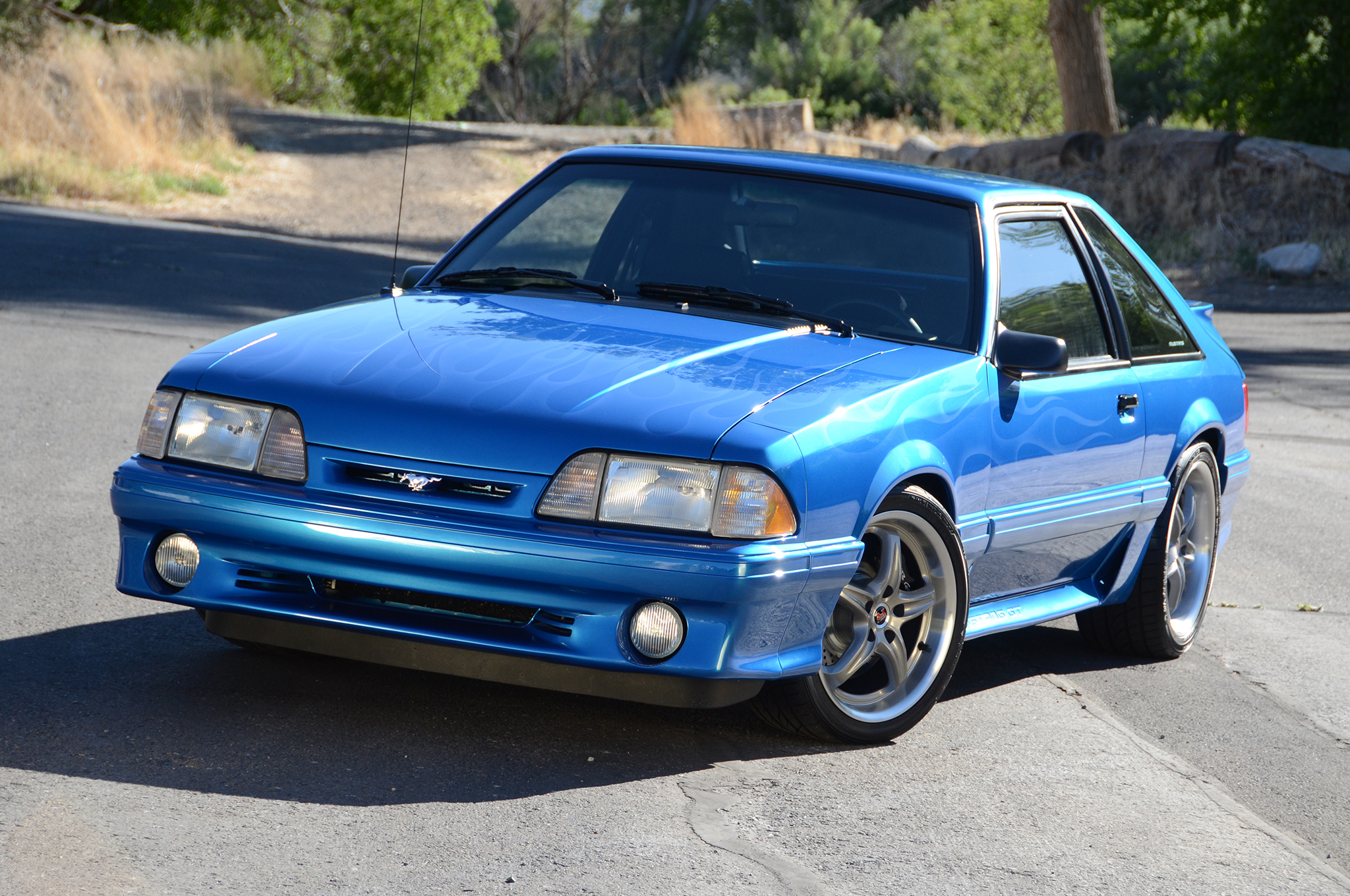 1987 – 1993 Ford Mustang GT/LX
1987 – 1993 Ford Mustang GT/LX
The third-generation Mustang was produced by Ford from 1978 until 1993. Built on Ford’s Fox platform (and thus commonly referred to as the “Fox” or “Foxbody” Mustang), it evolved through a number of sub-models, trim levels, and drivetrain combinations during its production life. It underwent updates for 1987, and for a time seemed destined for replacement with a front-wheel drive Mazda platform. However, company executives were swayed by consumer opinion and the rear-wheel drive Mustang stayed, while the front wheel drive version was renamed the Ford Probe. Enthusiasts group the generation into two segments: the 1979-1986 cars, with their quad headlight arrangement, and the 1987-1993 cars, with their aerodynamic composite headlamps and front fascia styling. Production ended with the introduction of the fourth-generation Mustang (SN-95) for the 1994 model year. The 1987-1993 cars are widely considered to be the better options.
Pros: Endless aftermarket, which means you can make them FAST. Fox’s have a lot of modern creature comforts and are fairly reliable, which makes them very easy to live with. These cars are appreciating and are almost assuredly future collectables.
Cons: People beat the absolute brains out of these things and finding good ones is hard. Want a stock example? Good luck (see above image). Special, lower production models and meticulously maintained examples are largely already starting to get out of this price range.
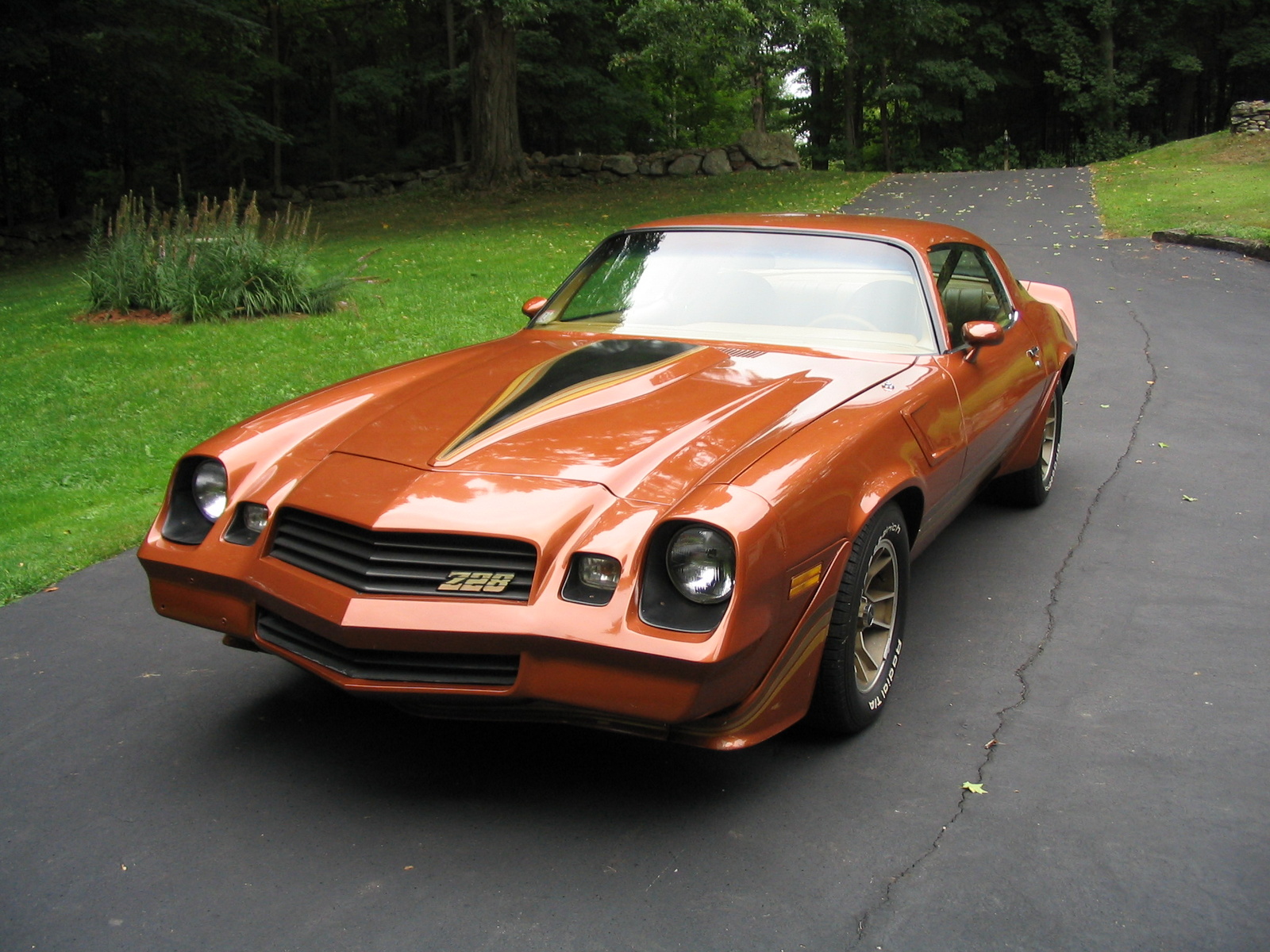 1977 – 1982 Chevrolet Camaro
1977 – 1982 Chevrolet Camaro
Introduced in February 1970, the second-generation Camaro was produced through the 1981 model year, with cosmetic changes made in 1974 and 1978. The car was heavily restyled and became somewhat larger and wider with the new styling. Still based on the F-body platform, the new Camaro was similar to its predecessor, with a unibody structure, front subframe, an A-arm front suspension, and leaf springs to control the solid rear axle. The 1980 and 1981 Z28 models included an air induction hood scoop with an intake door that opened under full throttle.
Pros: Looks like the Batmobile. Old faithful small-block Chevy with a million available go-fast goodies, which means there’s virtually no unattainable horsepower goals. For what they are, these things actually handle pretty well. Endless visions of Megan Fox peeking out from under the hood (like in that one robot movie) every time you walk through the garage. Did I mention the Batmobile thing?
Cons: Very heavy, which doesn’t lend itself well to the horrendously underpowered factory tune. Extremely uninspiring interior aesthetics. Manual transmission equipped examples are rare. Quite possibly will have a dried-up Whitesnake sticker on it someplace that you will never get off. No matter how hard you wish upon a star, it’s still not a Trans Am.
 1976-1995 Jeep Wrangler CJ/YJ
1976-1995 Jeep Wrangler CJ/YJ
The Jeep Wrangler is a compact and mid-size (Wrangler Unlimited models) four-wheel drive, off-road vehicle manufactured by Jeep. The Wrangler is arguably an indirect progression from the World War II Willys MB through the Willys civilian Jeeps (Jeep CJ) of the mid-1940s through 1980s that were produced by Kaiser-Jeep and by American Motors Corporation (AMC). Neither AMC nor Chrysler (after it purchased AMC in 1987) have claimed that the Wrangler was a direct descendant of the original military model. They are both giant liars.
Pros: Go anywhere and do anything, there’s nothing like a trusty old Wrangler. Very durable and reasonably reliable, basically anybody can work on a Jeep. Fantastic enthusiast support, the laundry list of aftermarket options is dizzying. At this price point, you can get a somewhat “done” one. Curb checking the sidewalk in front of your local 7-11 without worry, every time you crave a Slurpee simply never gets old.
Cons: Wranglers aren’t for everybody. They are bumpy, unrefined and will wear you out on highway drives. Canvas tops and doors are an extreme hassle to add and subtract on the fly. Basically, if it rains, you’re getting wet. Although comfort was improved on YJ, the Wrangler is basically the modern equivalent of a donkey ride.
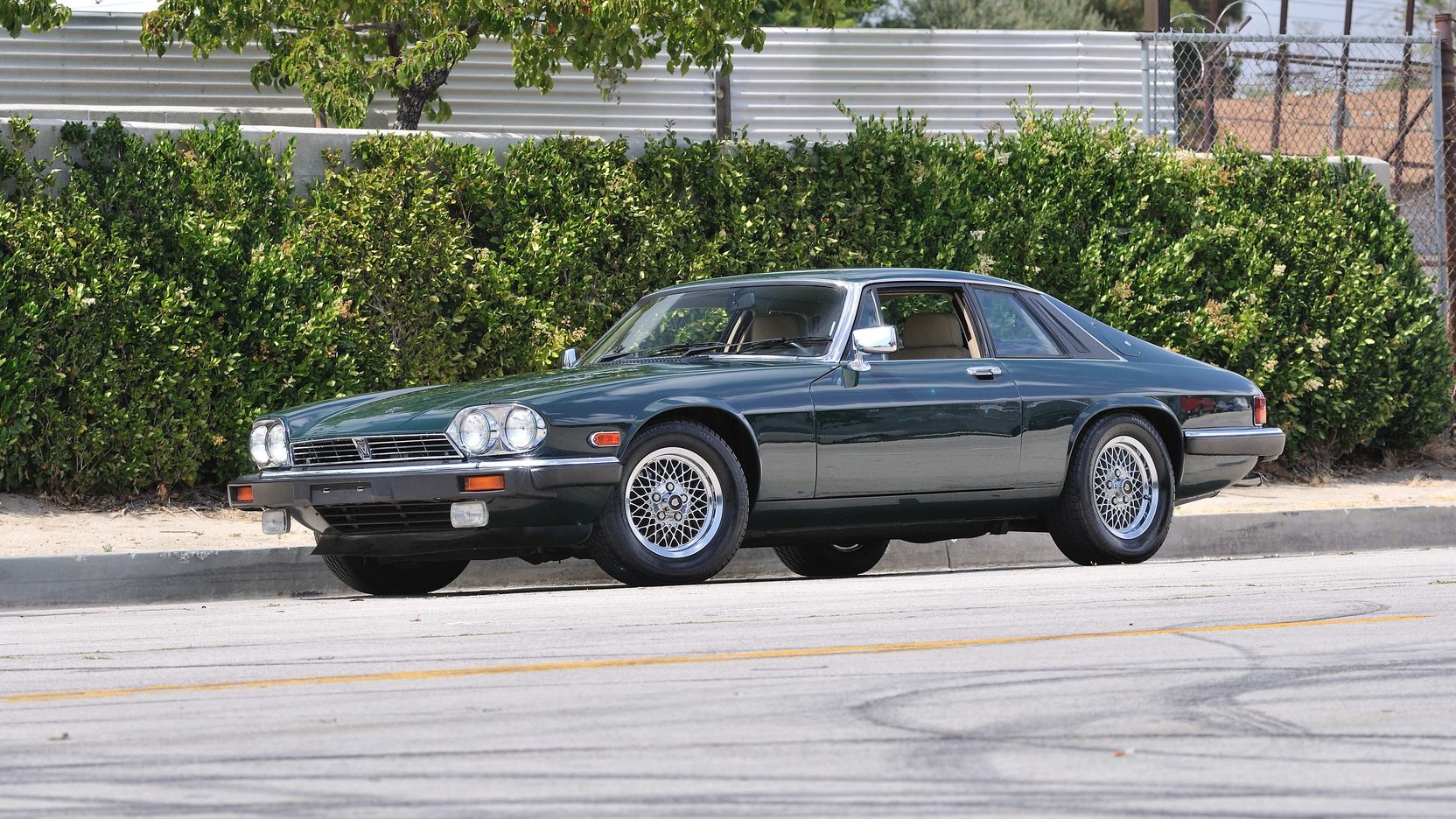 1985 – 1989 Jaguar XJ-S
1985 – 1989 Jaguar XJ-S
The Jaguar XJ-S, a luxury grand tourer, was produced from 1975 to 1996. The XJ-S superseded the E-Type (also known as XK-E) in September 1975, and was based on the XJ saloon. It had been developed as the XK-F, though it was very different in character from its predecessor. Although it never had quite the same sporting image, the XJ-S was a competent grand tourer, and more aerodynamic than the E-Type. The last XJS was produced on 4 April 1996; by then 115,413 had been produced during a 21-year production life.
Pros: Unbelievably sexy, smooth and capable with a timeless design and a glorious V12 symphony permeating just in front of your feet. Absolutely unapologetically British, much better looking and far more comfortable than comparable German options (probably cheaper too). Frank Sinatra loved them, so you know they are cool!
Cons: These were not well built cars and were thoroughly unloved for a long, long time, so there aren’t a lot of good ones left. XJ-S’s are well below average in the parts support department, so restoration is about as good an idea as trying to hand deliver Kim Jong-un a box full of cable modems. With this said, if it breaks, you’re basically fu@#ed.
 1972 Oldsmobile Cutlass Coupe
1972 Oldsmobile Cutlass Coupe
The Cutlass was a line of automobiles produced by Oldsmobile between 1961 and 1988, and again briefly in 1997-1999. Introduced as the top trim level in Oldsmobile’s compact F-85 line, the Cutlass evolved into a line of its own, spawning numerous variants, including the formidable 442 muscle car in 1964, premium Cutlass Supreme in 1966, and outright performance Hurst Olds in 1968.
Only one year of the Cutlass appears on this list and it’s for good reason. By 1972, Oldsmobile had largely run out of reasons to continue to make their legendary 442 muscle machine roar. However, the marketing equity inspired by the 442 namesake could not be ignored. As a result, 442 mostly existed in 1972 as an appearance and handling package (code W-29/FE2 suspension upgrades). This is good news for handy, budget conscious enthusiasts as it means that the surface differences between the lowly Cutlass and the mighty 442 are minimal. New hood, new grill, some logos, a spoiler (if you desire) and some stripes and you’re done. There’s no easier tribute car to construct anywhere than a 1972 Cutlass 442.
Sure, the purists are undoubtedly cringing at this notion, but honestly where else are you going to get this much eyeball for this little scratch? Answer: nowhere. Plus, tribute cars are fun! You can drive them and use them freely with virtually no consequence. The project element also certainly possesses a lot of appeal. How many of you built (or continue to build) model cars? Every single one of you should be raising your hands. This is the grown-up equivalent.
Note: In 1972, the 442 W-30 was still available and packing a 300 horsepower 455ci. However, for the sake of this argument, you can make a much more “authentic” W-29 knockoff for much less when sticking with the standard (180hp…. LOL) Rocket 350.
Pros: Remains the cheapest entry into the GM A-body realm. Luxurious interiors with a lot of equipment, cars with buckets and floor shifters are around if you look for them. Very easy to convert to convincing 442 tributes, with minimal investment.
Cons: Lots of examples have benches, fake vinyl tops and column shifters (BOOOO!). Many have been turned into low riders or donks with hack-a-Shaq in car electronics that can’t be brought back from the brink. Even in 442 trim, still somewhat considered an old man car. Will probably never appreciate from where it sits now.
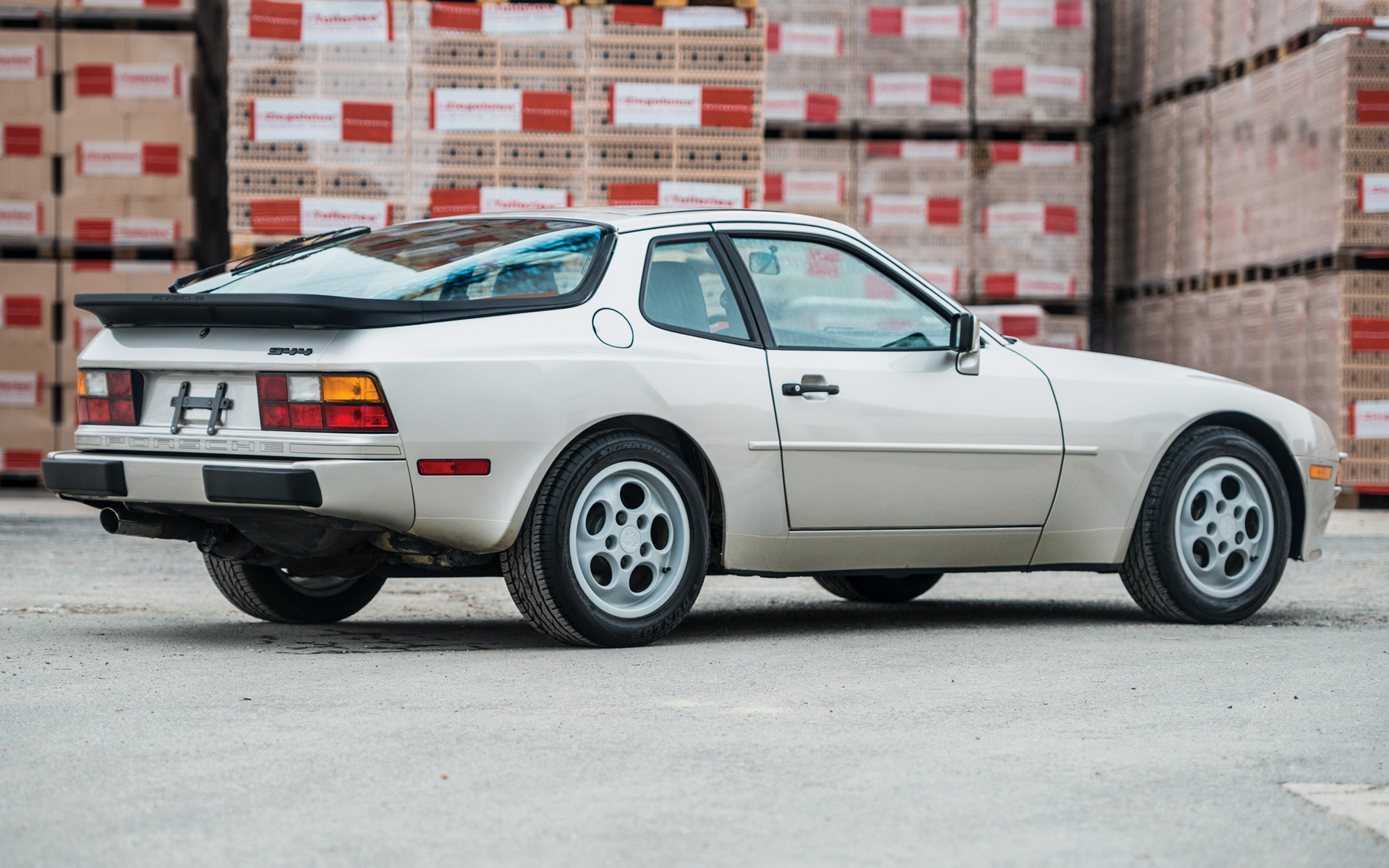 1987 – 1988 Porsche 944S
1987 – 1988 Porsche 944S
The Porsche 944 is a sports car built by Porsche from 1982 to 1991. A front-engined, rear-wheel drive mid-level model based on the 924 platform, the 944 was available in coupé or cabriolet body styles, with either naturally aspirated or turbocharged engines. Over 163,000 944s were produced, making it the most successful car line in Porsche history until the introductions of the Boxster and 997 Carrera.
For the 1987 model year, the 944S “Super” was introduced. The 944S featured a high performance naturally aspirated, dual-overhead-cam 16-valve 187 hp version of the 2.5 L engine, featuring a self-adjusting timing belt tensioner. This marked the first use of four-valve-per-cylinder heads and DOHC in the 944 series.
Pros: Great sound, comfortable interior, snappy shifter, excellent handling – It’s (kind of….) a Porsche! Even if you look like PETA spy footage from a sausage factory when you slip into tighty-whities, you can still relive all your teenage cinematic fantasies in a 944 (yes, I’m aware that Sixteen Candles and Risky Business aren’t the same movie, and that the 944 and 928 are far from the same car).
Cons: 944’s suffer a lot of the same neglect problems that Fox bodies and XJ-S’s suffer. Additionally, a lot of 944’s seem to be victims of the eBay parts bin and were maintained by overly budget conscious boy racers/tuners. OEM parts remain expensive and make a big difference, so you need them. 190 horsepower doesn’t feel like as much as it should in a Porsche, so they can present themselves as sluggish (god forbid you go for a lessor or earlier model).
 1984 – 1989 Toyota MR2
1984 – 1989 Toyota MR2
The Toyota MR2 is a two-seat, mid-engined, rear-wheel-drive sports car manufactured in Japan and marketed globally by Toyota from 1984 to 2007. Conceived as a small, economical and sporty car, the MR2 employed straightforward design elements, including fully independent MacPherson strut front and rear suspensions, four-wheel disc brakes, and transverse-mounted inline-four engines.
The name MR2 stands for either “mid-ship, run-about, 2-seater” or “mid-engine, rear-wheel-drive, 2-seater. It is Japan’s first ever mid-engined production car.
Pros: Weird, awesome, SUPER Japanese. Great mid-engine handling and auditory experience. Looks like the kind of Ferrari Max Headroom would drive, if he had arms. Solid 1980’s Toyota reliability, available T-tops and supercharger (from 1988) make this car an awful lot of fun for very little investment.
Cons: There’s not a lot of them out there in decent shape or otherwise. It’s going to take some work and probably a degree of patience to find a good one. Sort of a ho-hum interior with not a lot of room for larger drivers. Parts anyone? Probably less of an upside in regards to collectability than the far less interesting (but arguably much better driving) MK II cars. MR2’s, for some reason, seem to be the butt of a lot of car guy jokes.
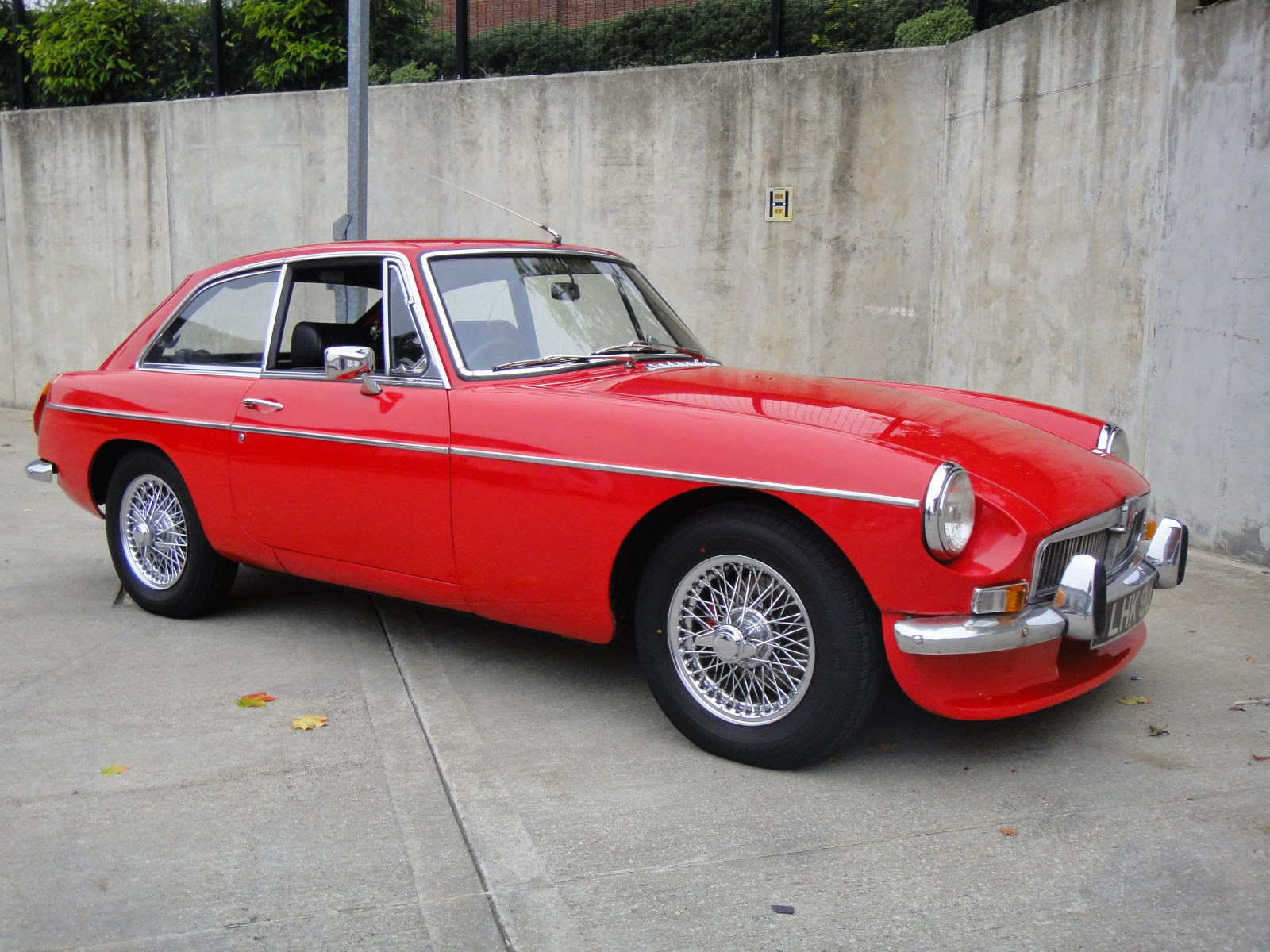 1969 – 1972 MGB GT
1969 – 1972 MGB GT
The MGB was manufactured and marketed by the British Motor Corporation (BMC), later British Leyland, as a four-cylinder, sports car from 1962 until 1980. First introduced in October 1965, the fixed-roof MGB GT sported a ground-breaking greenhouse designed by Pininfarina and launched the sporty “hatchback” style. By combining the sloping rear window with the rear deck lid, the B GT offered the utility of a station wagon while retaining the style and shape of a coupe. This new configuration was a 2+2 design with a right-angled rear bench seat and far more luggage space than in the roadster. Relatively few components differed, although the MGB GT did receive different suspension springs and anti-roll bars and a different windscreen which was more easily and inexpensively serviceable. Although more desirable, metal dashed earlier models with low back seats and later models with far more refined interiors don’t possess the same degree of value as their mid production counterparts.
I have a bit of a confession to make. The MGB GT is basically my favorite car in the world. If you have ever heard any radio or TV interviews I have given where my opinion mattered, I have been reasonably vocal about this. I simply adore these cars. They are honest, happy little gents that are achingly beautiful and there’s nothing else that gives you easier entry into the Pininfarina ownership club than a B GT. Now, don’t get me wrong, I’d set fire to basically every B ever produced for a Series I E-type, but that doesn’t change the fact that there’s a mountain of things to love about driving a B GT with very few of the hassles involved with playing around with a six or seven figure blue chip collectible. B’s simply rock!
Pros: Enormously charming from virtually every conceivable angle, with beautiful Pininfarina styling, they look a lot more expensive than they actually are. Extremely tight, well placed shifter and highly communicative steering. Great club and parts support, B’s of all kinds are extremely easy to keep on the road, but the GT adds an exotic flair that’s absent from the more commonly seen roadster. Much roomier than they look, a collection of hammers is required for successful ownership.
Cons: SLOOOOOOOOW! Even with overdrive (highly recommended), they are terrifying on the freeway. Not exactly the most reliable cars on the road, rust can be catastrophic, so finding a good one from a dry climate is critical. For some reason, a lot of sellers seem to think these cars are worth about twice what they actually are. A collection of hammers is required for successful ownership.
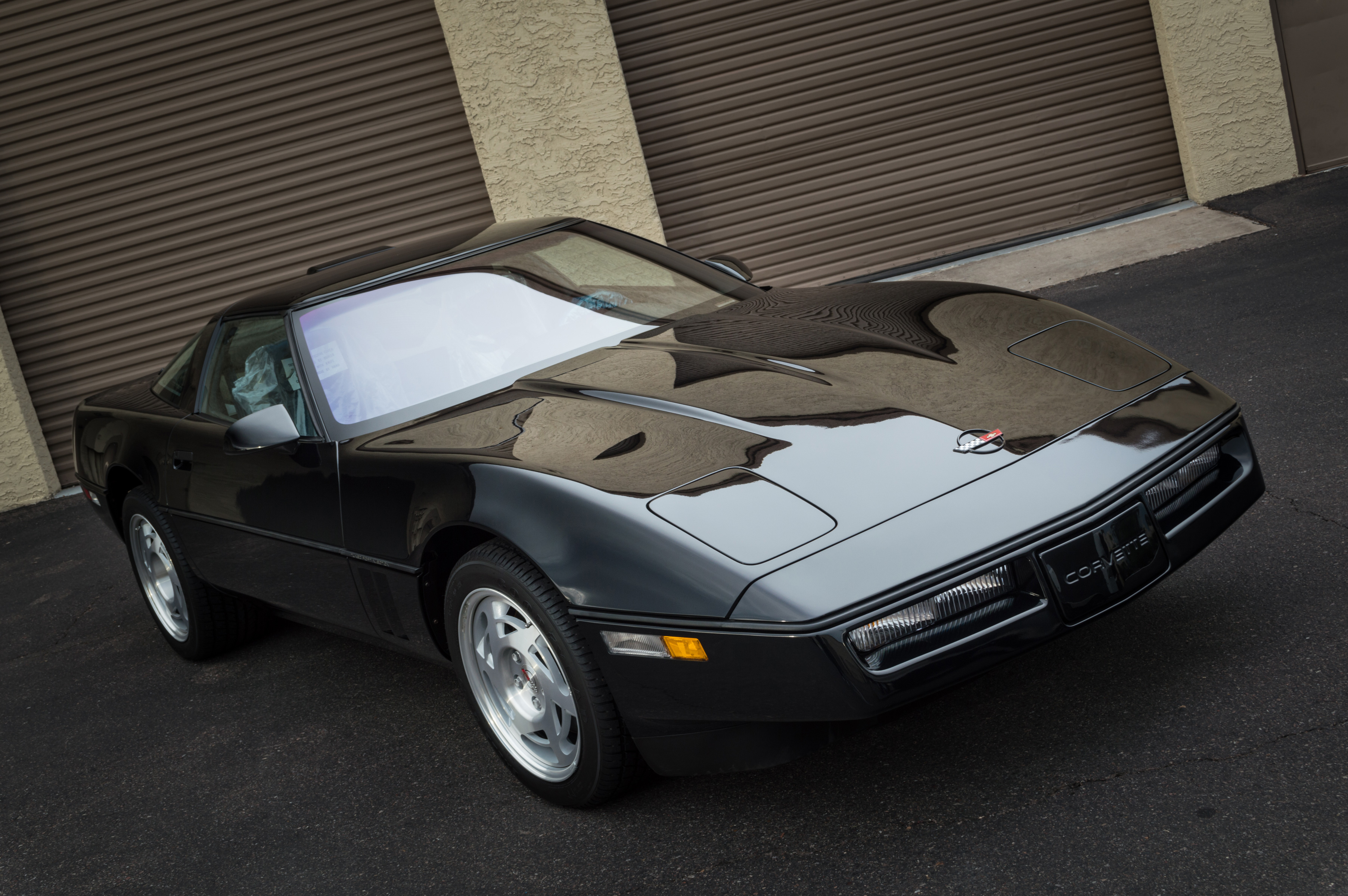 1990 Chevrolet Corvette L98 Coupe
1990 Chevrolet Corvette L98 Coupe
The Chevrolet Corvette C4 was the fourth generation of Chevrolet’s pivotal sports car and was produced for the 1984 through 1996 model years. During this era, the convertible returned, as did higher performing engines, exemplified by the 375 hp LT5 found in the ZR-1. In early March 1990, the ZR-1 would set a new record for the highest 24 hour-5,000 mile land-speed by going over 175 mph. Though prices rose even as sales declined, the fourth generation Corvette won its own loyal following as one of the United States’ most desirable sports cars. The last C4 was produced on June 20, 1996.
Gone by 1990 was the horrid digital dash and equally awful Doug Nash 4-speed that plagued prior years, but as a one year only, the 1990 is the only edition with the later interior that still retains the earlier styling, which I believe will have a more lasting appeal for collectors, despite the vastly superior engine options that followed. Unquestionably, the most desirable examples will be the Grand Sport (1st) and ZR-1 (2nd) models, but for a fantastic, cheap collectible, its really tough to beat a 1990 L98 Corvette Coupe.
Pros: Classic retro looks, removable top, available 6-speed trans and great fun to drive, even in base form. Currently appreciating with a big nostalgia factor for 30 and 40 somethings that are just beginning to reach their discretionary earning years. For kids that age that played with diecast cars, the early C4 was it. Lots of low mileage, original examples remain available as Corvette owners seem to never drive their cars for some reason. This is the base line for virtually everything seen in modern Corvette.
Cons: Questionable interior materials. Poor leather work with seats that tend to always look like they are the victims of a mountain lion attack. Plastic, plastic, plastic, C4’s are absolute rattle factories. This generation of Vette may continue to have a hard time shaking its balding, waterbed salesman image, and you really don’t want to crash one. Basically, if you wreck, you die and it’s always best to avoid that if you can.

Darin Roberge is President and CEO of Motorwerks Marketing and is a Marketing and Media Consultant in the Specialty Automotive and Live Events industries. Darin has been named a Business Trendsetter by Arizona Foothills Magazine, is a two-time nominee to Phoenix Business Journal’s 40 Under 40 list and is one of Sports Car Market Magazine’s 40 Under 40 for 2017. Learn more about Darin at www.DarinRoberge.com
